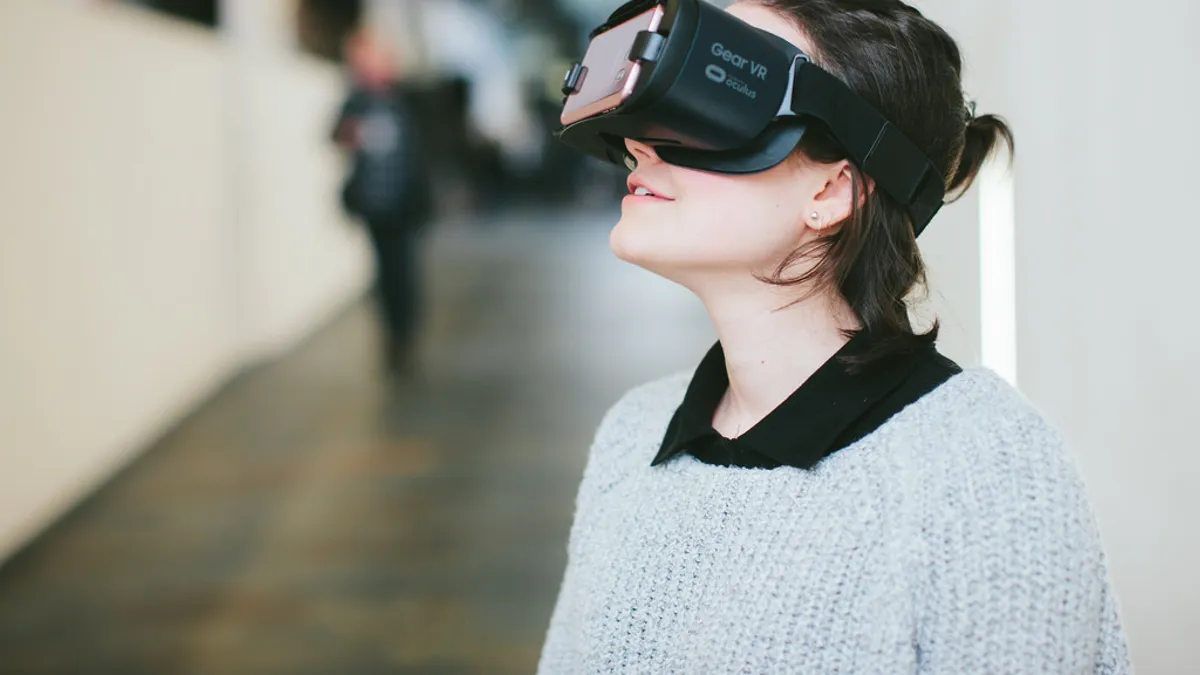The following is a guest post from Michael DeLacey, principal and CEO of Microdesk, a technical services consultancy for the architecture, engineering, construction, owner and operations (AECO) industry.
Many entering the virtual design and construction (VDC) and building information modeling (BIM) fields in 2018 overlook how the built world came to be. At their conception, the iconic buildings around us today were only represented on paper, leaving project owners, contractors and architects with limited means of visualizing the end result. Project teams succeeded by using their past experience and trade-specific training to read blueprints and mentally visualize the end result.
Augmented reality and virtual reality are rapidly replacing these traditional modes of mental visualization, providing users with an enhanced digital experience. In the design process, VR can now engage and immerse project teams and all stakeholders with the ability to walk through and “feel” the designed space. The exploratory nature of VR allows project owners, architects and engineers to “experience” how design changes will impact every aspect of the project environment and approve each facet with confidence, decreasing the necessity for future rework.
Improving workflow and accuracy
In the build phase, these new technologies are already rendering obsolete the age-old construction practice of “mocking up” complex components or finish selections. Instead of dedicating a portion of the workforce to create stand-alone, often disposable and multiple representations of complex building sections, stakeholders can attend a VR session to easily review and navigate the project’s complex elements in a true-to-scale setting.
With predictive systems in place, VR models can help users understand and visualize how changes would impact the project environment. Seeing the future before it even happens can prevent schedule delays, identify clashing elements and reduce cost overruns, enabling project teams to focus on the build rather than the mock-ups with only short-term usefulness.
In the near future, we can expect these new technologies to reshape the installation process, with an increased emphasis on AR. Contractors will be able to make precise changes with data including detailed measurements, field conditions and past rework information that is available instantly in a direct, augmented overlay view.
Old blueprints and 2D documents will be replaced with continuously updated digital data that syncs directly to augmented devices, telling contractors exactly what materials are required in precise quantities and when they are needed. This access will significantly decrease the project timeline, improve workflow, increase accuracy and reduce wasted material.
Troubleshooting with AR
AR will similarly transform the asset management (AM) phase of the building process. While AM currently can be costly and time-consuming with scattered information complicating repair procedures, AR will soon simplify the process by enabling facilities and maintenance personnel to visualize the necessary changes overlaid directly on the field site. With the availability of exact details regarding specifications and field conditions, AR will help personnel
efficiently plan, troubleshoot and arrive at the correct solution.
In this transition to using AR, facilities and maintenance personnel will need immediate access to pertinent and accurate AM BIM data to inform their process onsite for addressing critical operations.
Similar to surgeons who are using AR to overlay patient scans during a procedure, facilities and management personnel will be able to use AR to see the required repairs with the pertinent, accurate BIM data overlaid on the field site in an augmented display. Using a “heads up” display like the Microsoft HoloLens headset or Daqri Smart Glasses, staff will be able to visualize and interact with machinery being serviced without needing a laptop or handheld device.
Other VR/AR advantages
The advantages of utilizing VR and AR extend beyond the creation and expansion of the built environment. With the AECO industry incorporating more environmentally attuned approaches, VR and AR are bound to be among the tools utilized. Their application will result in efficient construction schedules requiring fewer material and equipment deliveries, reduction of rework and shorter building timelines. These three outcomes can play a critical role in decreasing the amount of carbon emissions generated by the project.
VR and AR technologies have the potential to revolutionize all aspects of design, build and AM processes. Down the road, these tools will arm every stakeholder with immersive visuals that can generate confidence, drive efficiency and increase accuracy.












